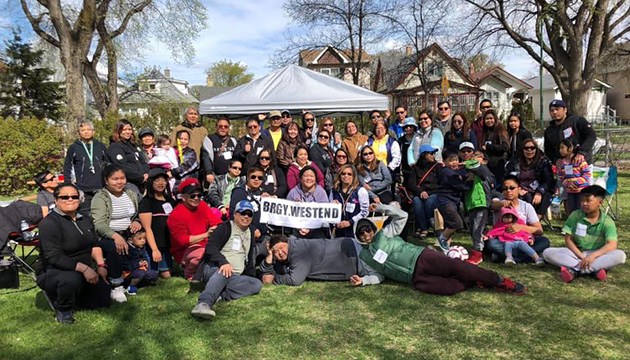According to the Philippine Embassy in Ottawa, of the 837,130 people in Canada with Filipino ethnic origin based on the census conducted in May 2016,
780,130 reported they were a visible minority in the country, making Filipinos and Filipino-Canadians the 4th largest visible minority after South Asians (1,924,635), Chinese (1,577,060) and black (1,198,545) minorities in the country.
Today the Philippines continues to be the top source of immigrants bringing 188,805 (or 15.58% of the total) new immigrants to the country, followed by India (147,190), China (129,020), and Iran (42,070).
Although Filipino immigrants came to Canada in large numbers only in the late 1960s while South Asian, Chinese and black immigrants had been coming since the 1800s, Filipinos have made their presence known. And they have reasons to be proud to be called Canadian Filipinos.
When Filipino immigrants arrive in Canada, they hit the ground running. They are young and at the prime of their lives. They have education, language abilities, professional competence and technical skills to contribute to Canada’s development. And they do very well. Many Temporary Foreign Workers and caregivers are able to go on holidays, buy a car, get a mortgage for a condo and send their children to universities. Most of them have done better in Canada than if they had stayed in the Philippines or worked in the Middle East or other countries.
If it is assumed that the Philippine government and society invested, on average, the amount of $6000 per year in feeding, housing, clothing, educating, training and nurturing each of these immigrants, up to age 42 when they migrated to Canada (approximately $252,000 per person of working age) then about $210, 956, 760,000 (Two hundred ten billion, nine hundred fifty six million, seven hundred sixty thousand dollars) have been invested by the Philippine government andsociety in preparing Filipino immigrants to succeed in Canada.
The recent waves of Filipino migrants composed of professionally trained domestic workers and caregivers have brought to Canada their skills and compassion in taking care of the young, the elderly, the disabled and the infirm. By bringing them into the country, the Canadian government is saving billions of dollars in institutional child and elderly care costs.
In their own ways, these domestic workers and caregivers have made available compassionate care “from stroller to wheelchair” to Canadians and have enabled Canadian women to pursue careers outside their homes.
Hence when considering the Filipinos’ economic contributions to Canada, it is not just the amounts of salaries earned, taxes paid and goods consumed that should enter the equation. The quality of service rendered by Filipinos who are competent, industrious, and caring should be accorded appropriate values as well.
Canadian Filipinos have reasons to be proud of their contributions to Canada. But how do they show gratitude and love of country to repay the Philippine government and society for preparing them to succeed in Canada? This is the question I’m leaving with you today to ponder and act.
By Eleanor R. Laquian for
The CFNet Editorial Board
Contact us at:










